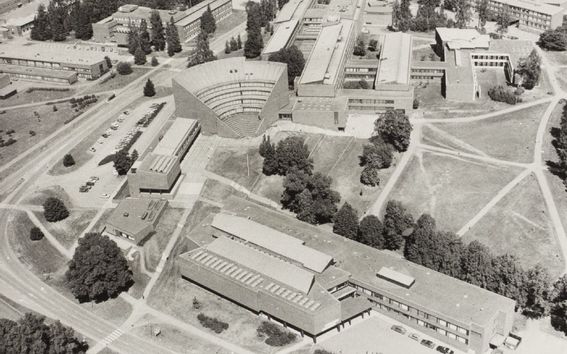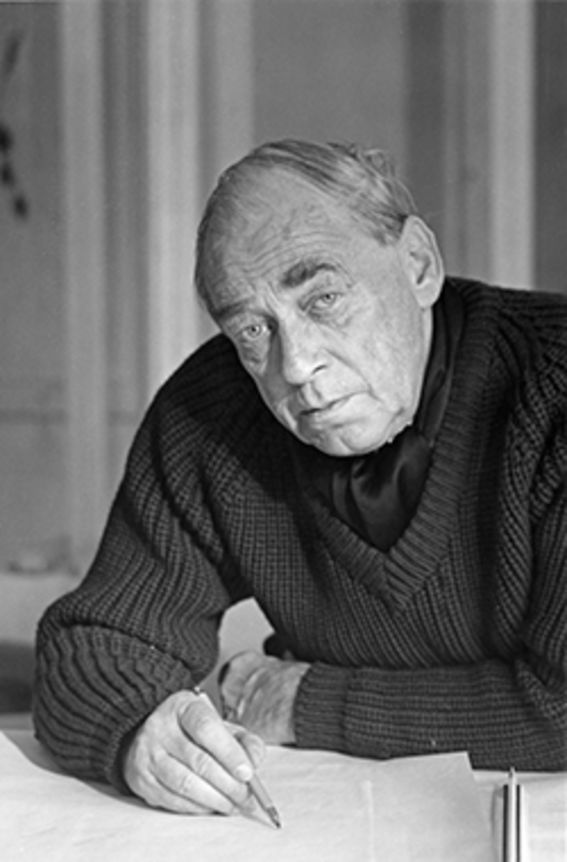Alvar Aalto and Otaniemi campus

Alvar Aalto had a multifaceted international career as an architect, the director of an architectural firm and designer, and he established design as a business. He graduated from upper secondary school in Jyväskylä in 1916. Aalto graduated with a degree in architecture from the Helsinki University of Technology, which merged with the University of Art and Design Helsinki and the Helsinki School of Economics in 2010 to form Aalto University. The Aalto University Department of Architecture operates on the university’s campus in Otaniemi, Espoo.
In 1923 after graduating with a degree in architecture, Aalto established his first architecture firm in Jyväskylä. He travelled often to Central Europe in the late 1920s and early 1930s and in this way became familiar with the latest trends of modernism. For a period of many years, Aalto’s works reflected a phase of pure functionalism. This phase helped him make his international breakthrough as did the design of the Paimio sanatorium (1928-1933).
Alvar Aalto designed every building a single complete work of art, including its furniture and lighting fixtures. Artek was established in 1935 due to the growing production and sale of Aalto’s furniture.

Otaniemi campus
Aalto designed the original layout of the Otaniemi campus together with his first wife Aino Aalto (1894-1949). Aino Aalto worked closely with her husband and participated especially in the design of furniture and interiors. Otaniemi’s buildings were predominantly designed during the Modernist period. The campus’ oldest buildings send a clear message in their material choice: red bricks are a reference to old Finnish industrial architecture. They illustrate the close relationship between the work carried out in the buildings and industrial activities. Alvar Aalto was responsible for the design of the main building of the former Helsinki University of Technology on the Otaniemi campus with his second wife Elissa Aalto (1922-1994).
The fan-shaped building was completed in 1964. Today the building is Aalto University’s Undergraduate Centre. The building is located on one of the area’s seven hilltops. The building and main auditorium situated at the end of the old estate’s linden tree alley cannot go unnoticed.
Alvar Aalto's office also designed other buildings on the campus; one of them is shopping centre A Blanc. The area’s outdoor lighting fixtures, of which there are three kinds, were also designed by Aalto. Some of the streetlights along Otaniementie road were also designed by Alvar Aalto.
Alvar and Elissa designed the Otaniemi Library building completed in 1969. The building underwent extensive renovation in autumn 2016, after which all the campus libraries moved into the building. The building was given new name: the Harald Herlin Learning Centre.
The renovation of the Harald Herlin Learning Centre was completed respecting the original in cooperation with the National Board of Antiquities and the Alvar Aalto Foundation. The building beautifully exhibits the features characteristic of Alvar Aalto’s design, such as the masterful use of light.
The developer responsible for the renovation was Aalto University Campus & Real Estate. The architectural design was the responsibility of Arkkitehdit NRT Oy (SAFA Architects Teemu Tuomi and Tuomo Remes), interior design was done by JKMM Architects (Interior Architect, SIO, Päivi Meuronen) and the realisation of the building contract was carried out by NCC.
An open-minded and creative research-oriented approach was characteristic of Alvar Aalto's work.
Alvar Aalto, lecturer, professor and researcher
Alvar Aalto's international reputation grew with the Alvar Aalto exhibition organised in 1938 by the Museum of Modern Art (Moma) in New York. After the exhibition, Alvar Aalto was a visiting lecturer at Yale University in the USA and was awarded an honorary doctorate by Yale. The Finnish pavilion in the 1939 New York World's Fair also increased Alvar Aalto's reputation. Alvar Aalto was a visiting professor at the Massachusetts Institute of Technology (MIT) from 1941. The Baker House dormitory on the MIT campus was designed by Alvar Aalto.
An open-minded and creative research-oriented approach was characteristic of Alvar Aalto's work. He tackled problems in depth, avoided settling with anything ordinary and found new, even surprising solutions.
Aalto University's aim is the same: we attempt to break traditional barriers between different disciplines in science and art.
Inquiries
Alvar Aalto (alvaraalto.fi)
Artek (artek.fi)
Paimion Sanitorium (alvaraalto.fi)
Baker House (baker.mit.edu)
Sources
Alvar Aalto Museum (alvaraalto.fi)






